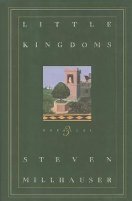What do you think?
Rate this book


240 pages, Hardcover
First published January 1, 1993
The swirling lines of snow were composed of separate flakes, and each flake was a cluster of separate ice crystals--scientists had counted over a hundred of them in a single flake. Under the microscope each minuscule crystal, colorless and transparent, revealed a secret symmetry: six sides, the outward expression of an inward geometry of frozen molecules of water. But the real wonder was that no two crystals were precisely alike. In one of this father's camera magazines he had seen a stunning display of photomicrographs, and what was most amazing about the enlarged crystals was that each contained in its center a whole world of intricate six-sided designs, caused by microscopic air pockets. For no conceivable reason, Nature in a kind of exuberance created an inexhaustible outpouring of variations on a single form. A snowstorm was a fall of jewels, a delirium of hexagons--clearly the work of a master animator.